Best Wood Stoves in 2024: How To Pick The Right One For You
Dive into the cozy world of wood-burning stoves, where warmth meets style in the heart of your home. This guide is your friendly companion on a journey to choosing the perfect wood stove, blending the rustic charm of traditional models with the sleek efficiency of modern designs. Whether you're after the nostalgia of crackling logs or the convenience of advanced heating technology, there's a stove out there just waiting to become the centerpiece of your living space.
We'll walk you through the ins and outs of selecting a wood stove, from understanding the eco-friendly benefits of renewable wood fuel to navigating the array of styles and placements that best fit your home's décor and heating needs. With practical tips and thoughtful advice, we aim to simplify your decision-making process, ensuring your new stove not only warms your space but also complements your lifestyle and interior aesthetics.
As we venture into the next section, get ready to uncover the essential features and considerations that will help you make an informed choice, turning your home into a haven of warmth and comfort. Let's get started on finding the wood-burning stove that's just right for you.
| Image | Product | Key Feature |
|---|---|---|
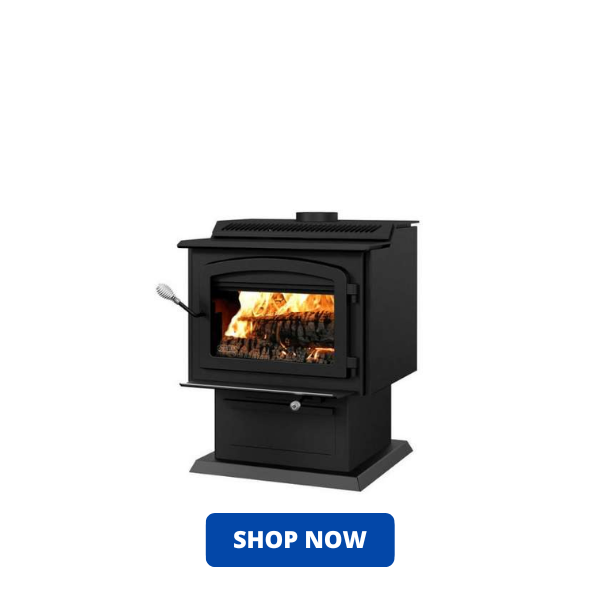 |
Drolet HT-3000 Wood Stove | High heat output for large spaces |
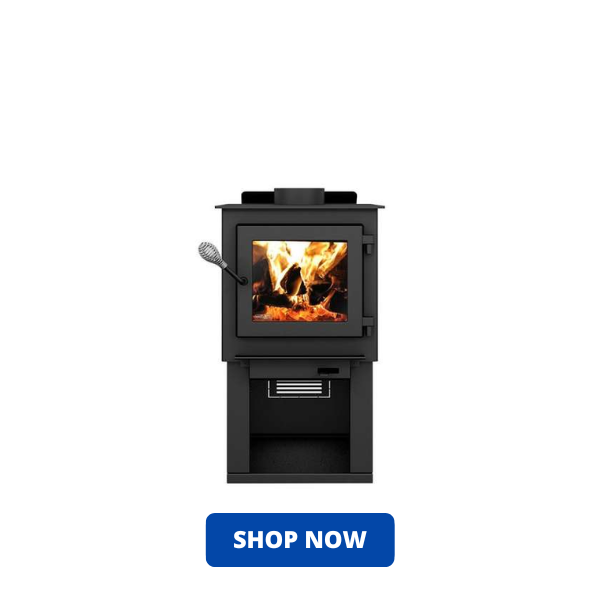 |
Drolet Deco Nano Wood Stove | Compact design for small spaces |
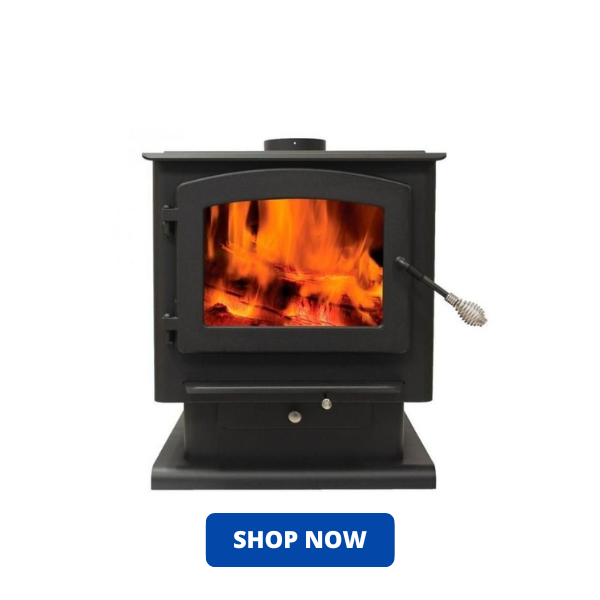 |
Englander 32-NC Wood Stove | EPA certified for clean burning |
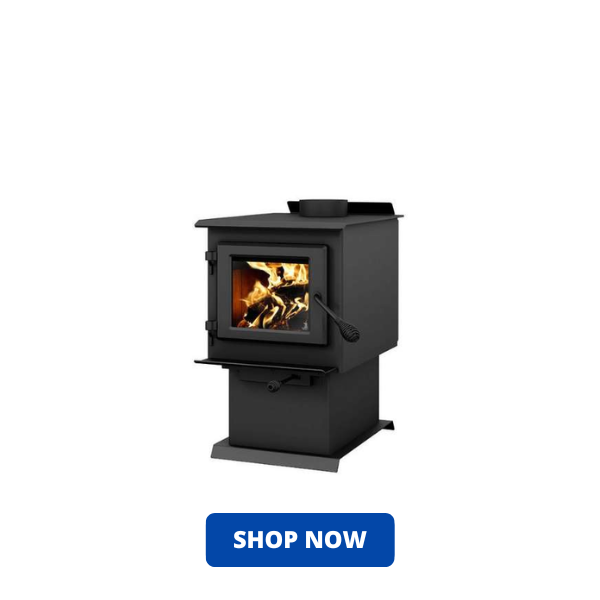 |
Century Heating S250 Wood Stove | Good heat retention for consistent warmth |
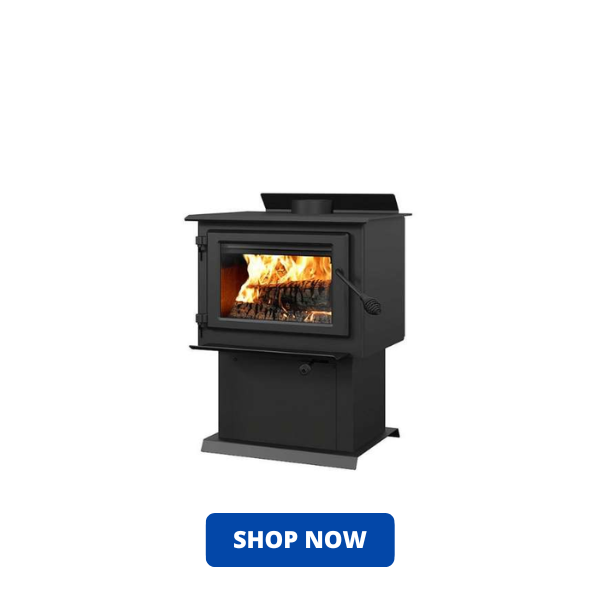 |
Century Heating FW2800 Wood Stove | High capacity for large areas |
Why Choose a Wood Burning Stove?
In a world brimming with heating options, wood burning stoves stand out for their unique blend of traditional warmth and modern efficiency, along with having a few tax benefits in the US. Let's dive into why choosing a wood burning stove could be one of the best decisions for your home.

Cost-Efficiency and Sustainability
Remember the days when my grandparents would tell stories by the warmth of their old wood stove? Well, it turns out they were onto something. Wood, especially if sourced locally, can be a significantly cheaper fuel compared to oil or gas. This cost-effectiveness is a boon, particularly in colder climates where heating bills can skyrocket. Moreover, wood is a renewable resource, and with sustainable forestry practices, using a wood stove becomes an environmentally responsible choice.
Placement Flexibility and Exceptional Heating
One of the things I love about wood stoves is their versatility in placement. Whether it's the centerpiece of your living room or a cozy addition to your study, these stoves fit just about anywhere. Modern designs have adapted to various interior styles, ensuring that your wood stove complements your home's aesthetic. The radiant heat they emit is not just about warming the air; it's about warming objects, creating a more comfortable and enveloping warmth.
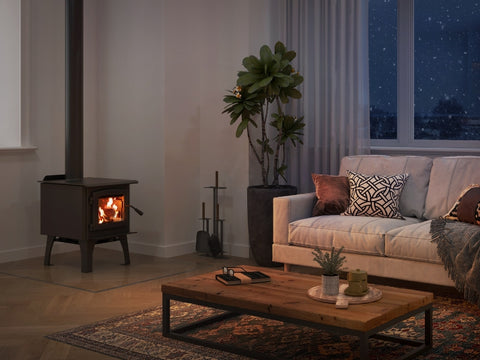
Independence from Power Outages
There's a certain peace of mind that comes with knowing your source of warmth isn't reliant on the grid. In areas prone to power outages, especially during winter storms, a wood burning stove becomes an invaluable asset. It ensures that your home remains a haven of warmth and comfort, even when the rest of the neighborhood might be grappling with the cold.
Environmental Benefits
In the conversation about climate change and carbon footprints, wood stoves play a fascinating role. Wood is a carbon-neutral fuel; the carbon dioxide released during burning is roughly equivalent to what the tree absorbed over its lifetime. Additionally, advancements in stove design, such as improved combustion technology, mean that modern wood stoves are more efficient and cleaner-burning than ever before. This reduces your home's impact on the environment, making wood stoves a choice you can feel good about.
Types of Wood Burning Stoves
When it comes to selecting the perfect wood burning stove, the variety can be both exciting and a bit overwhelming. Let's break down the types of stoves available, helping you find the one that fits your space and lifestyle like a cozy glove.

Stand-alone Units vs. Hearth Inserts
Stand-alone Units: These are the quintessential wood stoves that many of us picture – freestanding, often with a classic design, capable of being the focal point in a room. Ideal for homes that don’t have an existing fireplace, they offer flexibility in placement and often become a statement piece in interior decor.
Hearth Inserts: If you already have a fireplace but crave the efficiency of a wood stove, hearth inserts are your go-to. Designed to fit into your existing fireplace, they transform it into a more efficient heat source. It's like giving your old fireplace a high-tech, eco-friendly makeover.

Portable Models for Outdoor Use
Imagine enjoying the warmth of a wood stove on a starry night outdoors. Portable wood stoves make this possible. They are compact, easy to transport, and perfect for camping trips or outdoor gatherings. These models bring the charm of a wood fire to any outdoor adventure, making them a favorite among nature enthusiasts.
Catalytic vs. Non-Catalytic Stoves
Catalytic Stoves: These stoves use a catalytic combustor to burn off smoke and gases at lower temperatures, increasing efficiency and reducing emissions. They're like the hybrid cars of the wood stove world – sophisticated and eco-friendly.
Non-Catalytic Stoves: Simpler in design and operation, non-catalytic stoves use firebox insulation, a large baffle, and pre-heated combustion air. While they might not be as efficient as their catalytic counterparts, they are easier to maintain and still offer improved efficiency over traditional fireplaces.
Here is a more in-depth comparison of Catalytic and Non-Catalytic Wood Stoves.
Material Considerations: Cast Iron, Steel, Soapstone

Cast Iron: The classic choice. Cast iron stoves are known for their durability and heat-retention properties. They often feature intricate designs and can last generations with proper care.

Steel: If you're looking for something more modern and sleek, steel stoves are a great option. They heat up quickly and come in a variety of contemporary designs.

Soapstone: For those who prioritize consistent heat over a longer period, soapstone stoves are ideal. They absorb heat slowly and release it gradually, offering a steady warmth long after the fire dims.
Key Features to Consider
Choosing the right wood burning stove involves more than just picking a style you like; it's about understanding the features that will best meet your heating needs and lifestyle. Here's a blend of key features from top-ranking articles to consider:
Heat Output and BTU Ratings
When it comes to wood stoves, BTU (British Thermal Unit) ratings are like a badge of honor, indicating how much heat the stove can produce. A higher BTU rating generally means more heating power. For instance, a stove with a 60,000 BTU rating can effectively heat a larger area compared to one with 30,000 BTUs. It's like choosing between a cozy campfire or a roaring bonfire – both have their place, depending on your needs.
Coverage Area and Efficiency
The size of the area a stove can heat, measured in square feet, is just as crucial as its BTU rating. A larger stove might be overkill for a small room, while a smaller stove might struggle in an open-plan space. Efficiency is the stove's ability to convert wood into heat. Think of it as getting the most bang for your buck – or in this case, the most warmth for your very high quality wood stove.
Emissions and EPA Certification
In our eco-conscious world, the environmental impact of a wood stove is a significant consideration. EPA-certified stoves meet strict guidelines for emissions, ensuring they burn cleaner and reduce your carbon footprint. It's about enjoying the warmth of your stove without worrying about its impact on Mother Nature.
Design and Aesthetics: From Classic to Contemporary
Wood stoves are not just functional; they're also a piece of your home's aesthetic. From the timeless elegance of classic cast-iron stoves to the sleek lines of contemporary steel models, there's a design to suit every taste. It's like choosing a piece of art that keeps you warm – a blend of form and function.
Top 5 Wood Burning Stoves
In the quest for the perfect wood burning stove, it's essential to consider models that stand out in terms of performance, design, and efficiency. Here are our top 5 picks, each with its unique strengths and considerations, with a more detailed look at why we recommend each.
1. Drolet HT-3000 Wood Stove
Why We Recommend It:
The Drolet HT-3000 is a powerhouse of a stove, from what some consider to be the leading wood stove manufacturer, ideal for those who need to heat large spaces efficiently. Its high heat output ensures that even the most spacious rooms stay warm during the coldest days. The large firebox means less frequent refilling, making it convenient for busy homeowners. Its efficiency in burning not only provides significant heat but also means you're using your fuel in the most effective way possible.
Pros:
- Large firebox for extended burn times.
- High BTU output, heating larger areas effectively.
Cons:
- Heavyweight might require professional installation.
- Not ideal for smaller spaces due to its size.
2. Drolet Deco Nano Wood Stove
Why We Recommend It:
For those with smaller living spaces, the Drolet Deco Nano is a perfect fit. Its compact design allows it to be placed in areas where space is at a premium, without sacrificing style. The stove's aesthetic appeal enhances the decor of any room, making it a functional and fashionable addition. Despite its smaller size, it efficiently heats smaller areas, making it an ideal choice for apartments or cozy living spaces.
Pros:
- Space-efficient and easy to install.
- Aesthetically pleasing, enhancing room decor.
Cons:
- Lower heat output, not suitable for heating larger areas.
3. Englander 32-NC Wood Stove
Why We Recommend It:
The Englander 32-NC strikes a perfect balance between heating efficiency and fuel usage. It's designed to distribute heat evenly across medium-sized areas, ensuring no cold spots in your home. The stove's clean burning technology not only maximizes efficiency but also aligns with environmental standards, making it a responsible choice for eco-conscious consumers. Its EPA certification is a testament to its low emissions and high efficiency.
Pros:
- Suitable for medium-sized areas with clean burning.
- EPA certified, ensuring low emissions.
Cons:
- Limited in design options.
- Moderate complexity in installation.
4. Century Heating S250 Wood Stove
Why We Recommend It:
The Century Heating S250 is a versatile stove that fits a variety of home styles. Its efficient heating capability makes it an excellent choice for those seeking a balance between performance and aesthetics. The stove's durable build ensures longevity, while its ease of maintenance adds to its practicality. Its heat retention is particularly impressive, providing consistent warmth long after the fire has been stoked.
Pros:
- Durable construction and easy maintenance.
- Good heat retention for consistent warmth.
Cons:
- May require frequent refilling of wood.
- Heavier construction, which might limit placement options.
5. Century Heating FW2800 Wood Stove
Why We Recommend It:
For those needing to heat large spaces, the Century Heating FW2800 is an excellent choice. Its high capacity and robust construction make it a reliable source of warmth for extensive areas. The stove's long burn time is a significant advantage, reducing the need for constant refueling. This model is particularly well-suited for larger homes or spaces where sustained heat is necessary.
Pros:
- High heating capacity, suitable for large areas.
- Robust construction ensures durability.
Cons:
- Larger footprint, requiring more space.
- Higher cost and potentially excessive for smaller rooms.
Installation and Maintenance
Proper installation and maintenance are crucial for the safe and efficient operation of your wood burning stove. Drawing insights from top articles, let's delve into what you need to know about setting up and caring for your stove.
Professional Installation and Venting Systems
Professional Installation: Remember, installing a wood stove isn't a DIY project for a weekend. It requires professional expertise to ensure it's done safely and in compliance with local building codes. A professional installer will correctly position the stove, ensuring optimal performance and safety. They'll also navigate the complexities of venting systems, which is crucial for the safe operation of your stove.
Venting Systems: The right venting system is essential for any wood stove. It ensures that harmful gases are safely expelled from your home. There are various venting options, including traditional chimneys and modern direct-vent systems. Your installer will help you choose the best option based on your home's layout and the stove's specifications.
Regular Maintenance and Service
Regular Cleaning: To keep your wood stove running efficiently, regular cleaning is a must. This involves removing ash buildup, cleaning the glass door, and inspecting the stove for any wear or damage. Remember, a clean stove is a more efficient and safer stove.
Annual Service: Just like your car needs a regular check-up, so does your wood stove. An annual service by a professional will ensure that all components are in good working order. They'll check for any issues that could affect the stove's performance or safety, such as cracks or leaks in the venting system.
Safety Considerations and Best Practices
Fire Safety: Always follow fire safety guidelines. This includes using the right kind of wood (dry and seasoned), never leaving the stove unattended while in use, and having working smoke and carbon monoxide detectors in your home.
Best Practices: To maximize efficiency and safety, follow best practices like proper storage of your firewood, maintaining the right air flow, and knowing what to do for ash disposal. Remember, how you use your stove can significantly impact its performance and safety.
Environmental Impact and Sustainability
In an era where environmental consciousness is paramount, understanding the ecological impact of your wood burning stove is crucial. Let's explore how these stoves interact with our environment and what we can do to make sustainable choices.

Wood as a Renewable Resource
Renewable and Responsible: Wood is a renewable resource, especially when sourced from sustainably managed forests. This means that for every tree cut down for fuel, new ones are planted, maintaining a balance in our ecosystem. Using wood as a fuel source can be part of a responsible environmental strategy, especially compared to fossil fuels which are finite and contribute heavily to global warming.
Impact on Air Quality and Carbon Footprint
Cleaner Burning Technology: Modern wood stoves have come a long way in reducing emissions and improving air quality. The latest models are designed to burn wood more completely, thereby reducing smoke and particulates that contribute to air pollution. This cleaner burning technology not only benefits the environment but also improves air quality inside your home.
Carbon Neutral Fuel: Wood is considered a carbon-neutral fuel. The carbon dioxide released during burning is roughly the same amount that the tree absorbed during its growth. This cycle of absorption and release means that using wood as a fuel doesn't increase the overall carbon dioxide in the atmosphere, unlike fossil fuels.
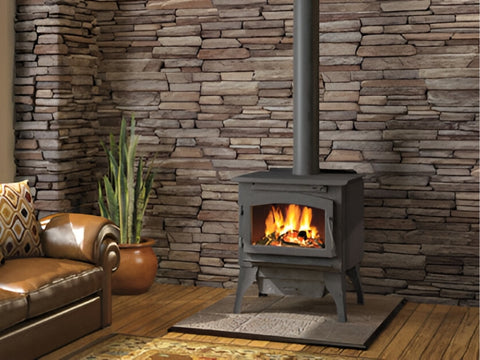
Choosing Eco-Friendly Models
EPA Certification: When choosing a wood stove, look for models that are EPA-certified. These stoves meet strict emissions standards, ensuring they burn wood more efficiently and cleanly. An EPA-certified stove is not just a choice for better heating; it's a step towards reducing your carbon footprint.
Efficiency Matters: The efficiency of a wood stove dictates how much of the wood's energy is converted into heat. Higher efficiency means less wood is needed to produce the same amount of heat, leading to fewer emissions and less impact on the environment. It's a win-win for both your home and the planet.
Conclusion
As we wrap up our journey through the warm and inviting world of wood burning stoves, let's take a moment to reflect on what we've discovered. Choosing the right wood stove is a decision that blends practicality with a touch of personal flair, and it's one that can bring years of comfort and satisfaction.
We've explored the cost-efficiency and sustainability of wood stoves, understanding how they can be both a budget-friendly and eco-conscious choice. We delved into the different types of stoves, from the classic stand-alone units to the innovative hearth inserts, and even the portable models for outdoor enthusiasts. We've also unpacked the key features to consider for best wood stoves, such as heat output, efficiency, emissions, and design, ensuring that you have all the information needed to make an informed choice.
Remember, the best wood stove for you is one that aligns with your specific needs and preferences. Whether it's the robust heat of the Drolet HT-3000 for larger spaces or the compact charm of the Drolet Deco Nano for smaller rooms, there's a few best wood stove brands out there that's just right for your home. Consider factors like the size of the area you need to heat, your environmental impact, and of course, the style that speaks to you.
As you embark on picking the best wood burning stove for you, think of it as inviting a new member into your home. One that promises to bring warmth, comfort, and a touch of nostalgia. It's a choice that goes beyond mere heating; it's about creating memories around the fire, enjoying quiet winter nights, and cherishing the simple joys of life.
Price: $

